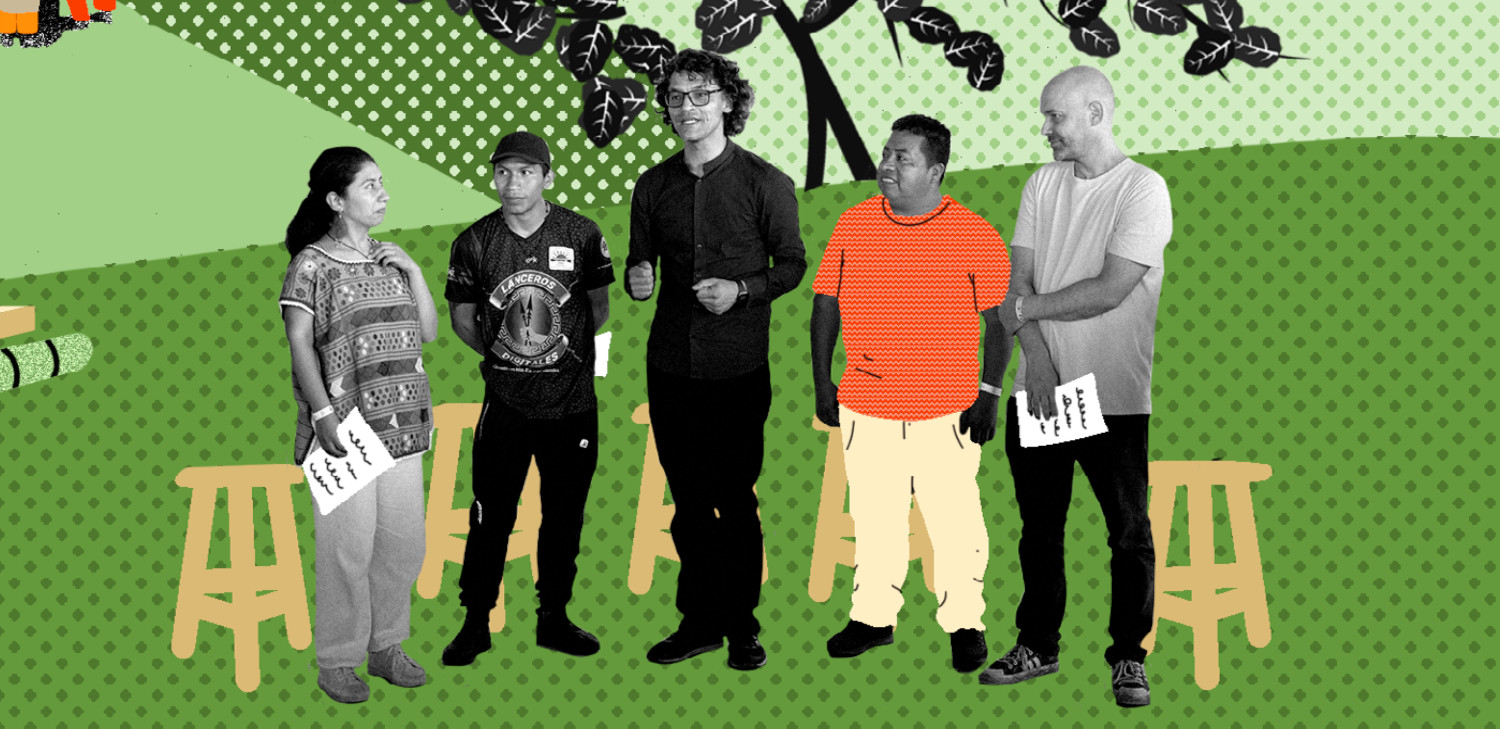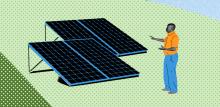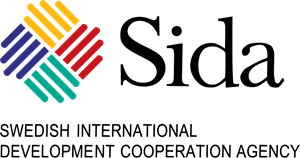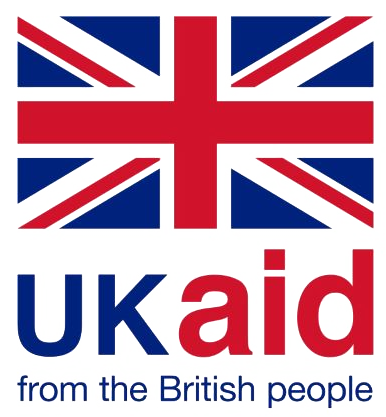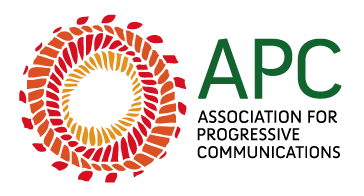#10 The network of the wind from the Nasa Indigenous community in Colombia
For this season’s 10th episode, you will get to know more about another story from Latin America. We’re talking about an experience in the countryside of Colombia, in an Indigenous community, where the Jxa'h Wejxia Casil Community Network is operating. To tell you more about this story, we talked to Edinson Camayo. He is a member of the Nasa Indigenous Nation and the project’s coordinator.
We will also travel with us to Mexico, where our team interviewed Adriana Labardini Inzunza. She is the policy coordinator for Latin American and the Caribbean at the Local Networks initiative. For many years, Adriana has analysed the role that regulators and policy makers have in increasing people’s well-being through access to information and communications technologies (ICTs) to promote human rights.
“Routing for Communities” is a 12-episode podcast. Here you will listen to the life stories of people who have come up with alternatives to overcome the challenges of digital inclusion in remote, rural and urban areas across the globe.
Stories and voices that are intertwined, connected by one thread: building internet and communication community networks.
Hello! This is me again, Renata Porto, the host of this 12-episode season around community-led initiatives on internet and communication. I am speaking from São Paulo, Brazil, where our studio is located.
For this season’s 10th episode, you will get to know more about another story from Latin America.
We’re talking about an experience in the countryside of Colombia, in an Indigenous community, where the Jxa'h Wejxia Casil community network is operating. To tell you more about this story, we talked to Edinson Camayo, Indigenous leader and the project’s coordinator.
“We have expectations and hopes with the government; but it is also our responsibility to think of how we can become stronger, asking for what we want.”
Still in the Latin American region, but a bit more to the north, in Mexico, our team talked to Adriana Labardini Inzunza. She is a lawyer specialised in ICT - Information and Communications Technologies. And she is the coordinator of policies for Latin American and the Caribbean at the Local Networks initiative.
“The states must recognise that the radio electric spectrum is a public resource to which we all should have access rights.”
Are you ready for this next trip? So, hop on board with me!
Routing for communities: An audio journey tracing community connectivity around the world.
"Hello, Edinson?"
"Hello, what a pity! What a pity!"
"No, no, don’t worry. How’s it going?"
"I’m doing well. Thanks."
Edinson gets in the videocall with a cellphone and immediately apologises for being a little late for the interview. He tells us that he was at a town hall’s council meeting where he represents his community.
He is a member of the Nasa Indigenous Nation and starts speaking in the language Nasa Yuwe.
(Speaking in Nasa Yuwe).
"Please receive salutations from Edinson Camayo Guetio. At the moment I am a zone councilman. In order to become one, let’s say, there’s like an autonomous governmental structure. I’m from the municipality of Caldono, from the state of Cauca, Colombia. In the Caldono township there are approximately six Indigenous reservations and each of them has their own autonomous governance. Pueblo Nuevo, which is Khwe'nxa Cxhah, is my reservation and I am their representative at the Calbidos’s Association."
The Caldono township has about 32,000 inhabitants. At the Pueblo Nuevo reservation, almost 65,000. The other five Indigenous territories have a population ranging from 2,000 to 11,000 people. The local economy is mainly sustained by agriculture, especially for their own sustenance, as well as coffee.
In the Colombian territory, the Nasa people are present in the states of the country’s southwest, including Cauca, which has 88% of the region’s population with over 186,000 people. The Nasa Nation is Colombia’s third largest Indigenous ethnic group. The country’s total Indigenous population is 1.9 million, approximately 4% of the total population.
Their native language is Nasa Yuwe, and Nasa means “children of the water, grandchildren of thunder”. Nasas are organised in different movements, among which is the Indigenous Regional Counsel of Cauca (CRIC in the Spanish acronym), the first Colombian Indigenous organisation, established in 1971.
CRIC is recognised as the Traditional Authority of the Indigenous peoples in the department of Cauca, and as a special public entity that currently leads negotiations with the Colombian Government.
CRIC defends the fundamental rights of Indigenous peoples through training teams, legal support and productive projects. It is proactive in education and health, under the guiding principles of unity, land, culture, and Indigenous autonomy.
The community’s political participation and autonomous governance are strong trademarks of Colombian Indigenous peoples. Edinson is no different and his own story has been marked by such consolidation.
"At first, since our parents grew up in the fields in a communal dynamic, we started out in community work, community groups, and the strengthening of our own cultural identities. Around 1995, when I was in high school, I started to get involved with political and social life, supporting leaders, collecting forms, assisting, working as a secretary. In 2015, I took up a leadership role, and it was also in 2015 that I had the opportunity to form a team in the rural areas, which was marked by FARC’s presence in our territory, laying down their weapons, which we called “reintegration process”. At that time, well, I had already managed to go to college, I have a Veterinary Science degree. But also at that time, I also dedicated myself a lot to productive projects and social projects."
Since the 60s, Colombia has experienced armed conflict between guerillas and the Colombian army, which continues to this day. These guerrillas are inspired by the Cuban Revolution, seeking to reach power and build a socialist-inspired society.
Since 2012, one of the major guerrilla units, The Revolutionary Armed Forces of Colombia – People's Army (FARC in the Spanish acronym), started the process of signing peace treaties with the government.
Four years later, a treaty was finally signed. From that moment on, there was a process of reincorporating FARC’s former fighters into mainstream society.
Meanwhile, Indigenous communities from the township of Caldono were working on initiatives for their economic and territorial development, which they call “living spaces”.
At that time, country’s census statistics revealed that the Nasa’s percentage of people still speaking their own language was rapidly decreasing. In 2005, 70% of the population spoke Nasa Yuwe. In 2018, that number was down to 40%.
Such a scenario raised great concern among community leaders, who started to ask themselves what was going on and how they could change this situation. And one of the instruments involved in stemming this plunge was information and communication technologies.
"And that’s when we realised that we have to have technological autonomy and relevant communication. And then, we said:
'Well, we’re offline here.' So, we started to work on it. We got a group of young people from the community and began to train them on the importance of communication. We looked at it from two perspectives: what is communication within the framework of our worldview, and also what Western communication is. Then we started the discussion, and the different kinds of technologies that the community already had access to and those that were still coming. Those reflections were very internal, but the formation was also a diploma for our young people. And when the former FARC combatants also saw that the right to communication in the community was lacking, then we said to each other at a meeting: “Really? We’re also having these conversations and so are you.” So, we better unify our proposal and teach our youth. And that’s when we started with the internet, audiovisual communication, stations that were already in place but to which we had lost access due to equipment damage. That’s how we’re going to become stronger. "
That’s how, between 2018 and 19, they went from their internal debates to the implementation of projects alongside partners such as Colnodo. This non-profit organisation from Colombia seeks to facilitate and improve communications and exchange of information between organisations and communities in the country via low-cost information and communication networks.
Through the formation, planning and instructing, which take place in Colombia in processes called diplomados, seeds of what would become the Jxa'h Wejxia Casil network were planted. The name of the network means “Networks of the Wind” and Casil is the portmanteau word of Caldono and Silvia, the two towns involved in the initiative.
Some of the initial challenges and technical tasks concerned mapping the community’s infrastructure that would be required in the territory: identifying connectivity spots, acquiring signal towers, electricity, wiring, and, finally, installing the equipment that would provide shared connection in the region. All this work was executed by members of the community, with technical support from Colnodo. This is how a community-led network using Wi-Fi technology created a kind of intranet in the territory.
Through partnerships, the community was able to get technical support and resources to acquire all the equipment it needed. Aside from Colnodo, other partners included the United Nations Development Programme and the Mission to Verify United Nation’s Peace Treaties in Colombia. They contributed by monitoring and providing funds.
When the COVID-19 pandemic hit the territory, the need for internet access increased even more, so that children and teenagers could have classes remotely. This entailed a great deal of cost for the families, since private connectivity services are very expensive.
And for community networks to have internet, it was necessary to pay for the service from a traditional provider, following the system in place across the world. In other words, through for-profit corporations.
The Jxa'h Wejxia Casil launch was made possible in September 2020. The project initially centred on the implementation of an intranet and internet use. The former enabled users to offer their products, recipes, homemade medicines, announce events and make community videos, like exclusive content by the Indigenous reservations.
Internet access helped the network skyrocket from 18 to 480 users and it kept growing through the community support and trust. And as the community network grows, the cost of usage and antennas decreases, as they are shared among more people, as well as through collaborative work. Thus, they overcome financial hardships and facilitate recognition for the community’s technical operators, who get trained to take care of the infrastructure as a whole.
"We have already entered not only the internet, but we have also begun to strengthen, let's say, the 2G mobile community right now. This is used for security only, exclusively by the Indigenous Guard. But we also said among our people… we said: we are going to buy a transmitter, a transistor, for a television and we also have a community television right now, but our dream is to reach almost a regional level, and we are projecting that."
Community mobilisation, therefore, is a way of overcoming connectivity challenges in a way that internet access costs become more affordable for the people and that the use of the network is guided by local aspirations and interests. And the dreams motivating the creation of “The Networks of the Wind” keep on multiplying, including taking optical fibre to the community and producing even more content in the Nasa Yuwe language, strengthening the Nasa territory, culture and worldviews.
And so it’s time for us to say goodbye to Colombia. And now we’re going up north, to Mexico.
In the city of Tulum, on the Caribbean coast of Mexico, is where our next interviewee, Adriana Labardini Inzunza, lives. She is a lawyer, member of the Rhizomatica council, vice-president and founder of Conectadas, and coordinator of policies in Latin American and the Caribbean at LocNet.
"What’s up? I’m Adriana Labardini Inzunza. I am Mexican and I’m a lawyer. From very early on, I’ve been interested in legal issues concerning public interests; in how the legal world could be used towards equality, justice, and the effective exercise of human rights by all people in the world. For over 30 years I have been especially interested in the potential of technology to open up access to education, information, freedom of speech, rights to communication, people’s cultures, and how people under these conditions can use technology as a tool in favour of peoples and their collectives and not the other way around."
For many years, Adriana has been debating and acting on regulations and public policies in the digital world, and the role that regulators and lawmakers have in increasing people’s well-being through access to ICT to promote human rights.
With wide experience and knowledge of the Latin American reality, Adriana talks during the interview about the region’s diverse characteristics in cultural, linguistic and biodiversity terms, but as well as its major social and economic disparities.
And this is also true when it comes to telecom, which presents a “market failure”, as defined by Adriana. A failure because it privileges and addresses urban centres, wealthier and more populated areas, and wherever there is more financial return and profits. On the other hand, there is disdain and, consequently, lack of internet access and communication services in rural areas and low-income populations.
"For this reason, as with everything, there must be another model. Not all provision and service models have to be governed by the market. There are provision models for services such as education, water supply, healthcare and telecommunications that can function sustainably as a model of social enterprise, production co-ops or non-profit companies. Even though they have to cover costs, they do not intend to have a profit margin that makes these services more expensive… and that is where community networks play an important role in our region."
There are many factors that can help these experiences of community operators to flourish. Among them, not applying the same model of regulation for both major global corporations and small local operators with a social agenda. Having policies that do not tax or involve high rates for internet use licences as well as use of information technologies.
And Adriana also highlights the need to understand the radio electrical spectrum as a public asset.
"States need to recognise that the radio electrical spectrum is a public resource to which we should all have the right to access, not just five or six large global mobile operators. The myth that the spectrum is always scarce is just that, a myth. In rural and remote areas there are huge amounts of spectrum that no one uses and that could be benefiting local schools, clinics, individuals, small businesses, farmers and artisans, to give them an opportunity of sustainable development in their own terms."
The Jxa'h Wejxia Casil experience and others we have seen throughout this season show us that local communities are capable of overcoming the inequalities mentioned by Adriana. In many cases, they also use connectivity to improve their well-being and defend other rights. Creating a national environment in which public policies, regulation and forms of funding take into account and support these communities is fundamental to push digital equality.
And we’ve reached the end of our tenth episode. As always, I hope the stories that were told by voices from different parts of the world have been a source of learning and hope. And that the initiatives shared in this podcast lead us to act, together and collectively.
If you want to know more about the Jxa'h Wejxia Casil network as well as Colnodo, look up the links on this episode’s description. We’ll be also leaving links to other materials reflecting about policies and regulation supporting community-led networks.
If you’ve liked this podcast, please recommend it to those you know will appreciate it as well.
You can follow the season on the main podcast platforms or on APC’s website: routingforcommunities.apc.org.
We’ll meet again soon, with new experiences and stories from community-led networks that are also connected to our lives.
In the next episode, we’re travelling to Asia, to get to know a little more about community network experiences in Thailand.
You listened to the tenth episode of “Routing for communities: An audio journey tracing community connectivity around the world”. This is the podcast of the Local Networks initiative, a collective effort led by APC and Rhizomatica. Production: Rádio Tertúlia.
Thanks, and see you next time!
Credits
This podcast is an initiative from the Association for Progressive Communications (APC) and Rhizomatica, produced by Rádio Tertúlia.
Script, production and voiceover: Vivian Fernandes
Script translation: Thiago Moyano
Presentation: Renata Porto
Editing, sound and voiceover: Beatriz Pasqualino
Coordination: Beatriz Pasqualino and Débora Prado
Consulting Board: Flavia Fascendini, Kathleen Diga, Cynthia El Khoury, Bruna Zanolli, Nils Brock, Adrián López and Daniela Bello
Illustrations: Gustavo Nascimento
Web design: Cathy Chen and Avi Nash
